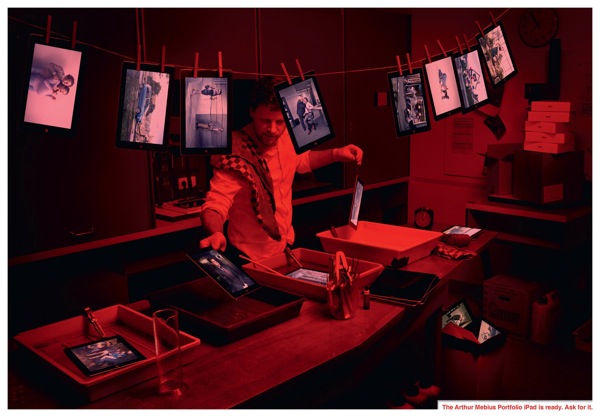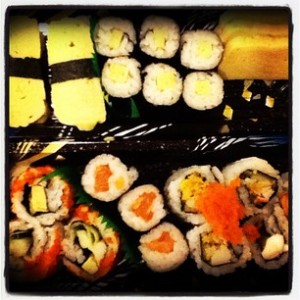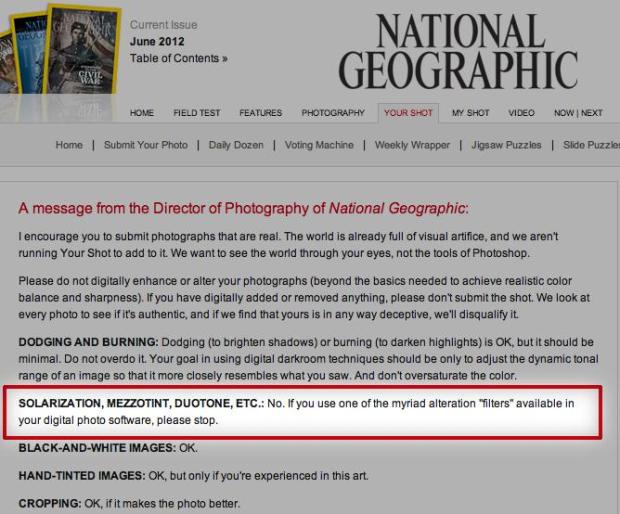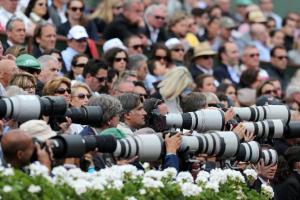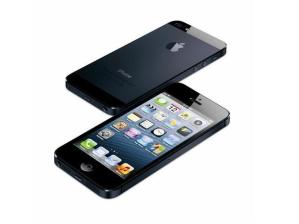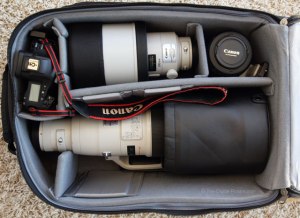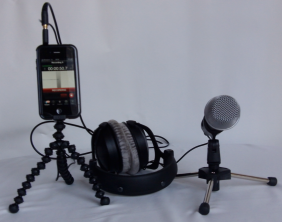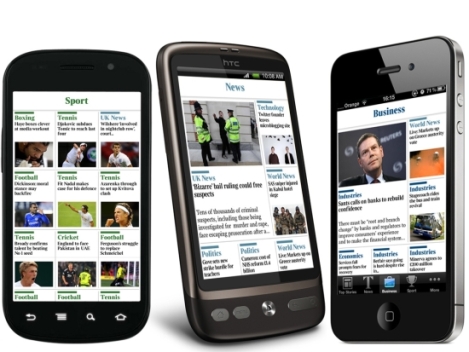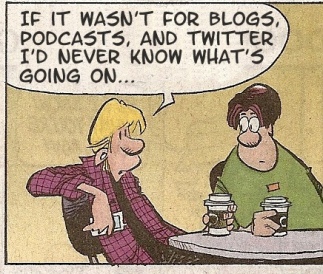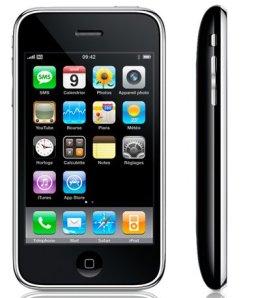Posts Tagged Smartphones
Instagram: a teen-toy or the new reporter tool?
Posted by leagloor in Technology on November 26, 2012
“Instagram photos cheat the viewer!” Nick Stern’s claim, published in February 2012 on cnn.com, came as a bombshell, engendering pros and cons-reactions in the journalism and photo-reporting world. Who’s right? Let’s have a look!
With more than 30 millions of users and about 150 photographs posted (see article on Wikipedia), the photo-editing and social-networking app Instagram can be described as one of the most successful Smartphone tools. Among its users; teenagers, adults, singers, actors, politicians and, of course, journalists!
Yet the journalistic use of Instagram in a professional perspective has created a huge debate on the web since last February. The vexed question: can journalists and photojournalists honestly use Instagram as a professional tool, to cover a war or a political meeting, or has it to remain a “toy” only good to post pictures of your breakfast or your new nail-art?
 |
Cheating with reality?
For some photographers no hesitation, Instagram has nothing to do with information and journalism. Here are some of their main arguments. But before, here you go with a video that shows you how Instagram works and what are its main features:
Filters and fake emotions
Photographs bring emotion, related to the subject, to the viewer’s history but also thanks to the way the picture is taken. Regarding this, the anti-Instagramers are clear: Instagram kills the authenticity, creativity and originality of your pictures.
For Nick Stern (see the complete article here and his website here), American news photographer and first anti-Instagram pamphleteer, the pictures taken with the app do not communicate real emotions, conveyed by the photographer, as it should. “It’s the work of an app designer in Palo Alto who decided that a nice shallow focus and dark faded border would bring out the best in the image”, he claims, “The image never existed in any other place than the eye of the app developer”.
“The greatest photographs are created in the mind of the photographer and not in the workings of the camera.” Nick Stern
Moreover, with 14 different filters, the variety of pictures is indeed quite large however rather limited. According to its accusers, Instagram creates therefore photographic standards, which enchain the users, kill their creativity and prevent them from expressing their emotions.
But was it not already the case with silver films? Indeed, during the development process, the photographer could use different chemical techniques such as cross-processing and could therefore add something external to the picture.
Aesthetics against information duty
Showing reality objectively is one of the main goals of any journalists. For the anti-Instagramers, using an app that adds effects on a picture in order to make it look fancier or nicer does not fit the profession ethics. That is why Nick Stern says that “Every time a news organization uses a Hipstamatic or Instagram-style picture in a news report, they are cheating us all”.
However aesthetics is a part of photography anyway such as subjectivity. Photographers are dealing with image and cannot completely distance themselves from the visual dimension of their job.
As Joerg Colberg, an American photographer says “We all know that all photography is fiction: as a photographer you make choices, which influence the photograph enough for it to be more of a fiction than a fact. […] But the photojournalist’s task, no actually the photojournalist’s duty is to minimize the amount of fiction that enters her/his photography. […] The problem with InstaHip in this particular context is it adds a huge amount of fiction to photography, simply by its aesthetic” (see the complete article here).
News Trivialisation
Another problem raised by the accusers is that the majority of the Instagram pictures deal with the users’ every day life: meals, hobbies, fashion, cosmetics, friends, family and pets. Mixing serious news pictures with these trivial subjects minimizes their value and their informational impact.
“Since in the dominant context, people’s social lives, InstaHip photographs are usually not seen as particularly relevant, once you use InstaHip as a photojournalist you’re applying that same kind of thinking to your images. You’re trivializing your message.” Joerg Colberg
Why so unserious?
Maybe the solution would be to create a parallel network, which would share the same technical features and would be exclusively destined to news companies, a kind of Infostagram! But we will come back to that later.
The Like button tyranny
As other social networks, Instagram allows the users to share their pictures on other social medias such as Facebook and Twitter and proposes a comment option and a Like button.
American panelists wondered to which extent “Instagram’s Like button, combined with the image filters, has turned the service into performance art, with people trying to rack up Likes for the most aesthetically striking images” explains Steve Myers in his article on Instagram (see the complete article here). A sort of photographic social desirability!
As we will see later, these social network features can also be positive for journalists. In the mean time, to read more about the Like-culture problematic, click here.
Vintage overdose
You can see it in fashion: vintage is trendy! And photography is no exception to the rule. Instagram, with its Instamatic and Polaroid-inspired effect perfectly incarnates this trend (see this article here). But as Jean Cocteau said “Fashion is what goes out of fashion.” Thus, the risk that Instagram becomes outmoded is real.
What risk for journalism then? Since Instagram becomes has-been, the information broadcasted on it will not be seen as relevant by its users or its ex-users. The value of information will be at stake.
Moreover, is not information supposed to be related to the here and now, to the burning issues and not focused on the past?
 Instamatic Kodak 100, 1963 |
 Polaroid One Step, ’80 |
Connecting people?
Does Instagram look like the Devil to you now? Fortunately some positive and helpful aspects can also be highlighted, all related to the social dimension of the app.
Information network
As already said, Instagram is not only a photo-editing app, it also allows the user to create an extended network, to follow people and to get followers. Videos on Youtube actually show you how to be followed by the maximum of users. Do you remember what we have said about the Like button tyranny?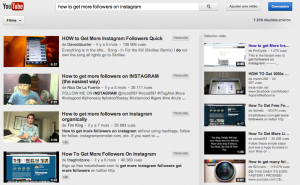
More seriously Instagram can become a real information feed, through the channels of news companies or through the topics dealt with on the official blog of the app (see here). However, at the moment, the media channels remain extremely poor and unfed. The only one which seems active is the CNN’s, perhaps because of its US origin and destination. Here are some examples taken from Webstagram, the Internet viewer of the app.
One of the rare successful examples of use is the covering of the New York Fashion Week 2012 by the New York Times. The journalists present on the site provided 450 pictures through the account created for this occasion, visible here. With 156’319 followers, the operation was a real success.
 |
 |
Another example: the National Geographic launched a blog fed with climbers’ Instagram pictures called “Field test – On Everest”. The Instagram feed of the magazine, visible here, is also well provided with pictures.
However the company seems less tolerant regarding the pictures sent by its readers. In a message on the company website, the photography director encouraged the National Geogrpahic readers to avoid sending them modified pictures:
This desire of authenticity and objectivity matches the cons arguments presented previously regarding Instagram.
The non-professional Keystone
If the National Geographic had a really ethical reaction regarding photography, this is not the case for some other medias. Indeed Instagram can be used as a kind of a non-professional Keystone.
Let’s think about several showbiz articles written by the 20minutes about Rihanna’s tattoo or Kim Kardashian’s look. The information comes directly from what the celebrities post on Instagram as a primary source. Even if we are talking about famous people, this is what we call crowdsourcing or UGC (User Generated Content).
In a more serious perspective, a new app has been developed, called “Signal”, a mix between Instagram and Foursquare. With this app, you can post pictures and geolocalize them.
Normal citizens and journalists will thus be able to get informed of the events happening in their country or their area. What happened with Twitter during the Arab Spring could also happen thanks to photographs (see complete article here).
Democratisation of photography
One of the main arguments against Nick Stern’s article was that his vision of photography was elitist. Let’s think about Mathew Ingram’s article (available here) who vividly criticizes this vision.
Likewise, the photographer and photography teacher Richard Koci Hernandez praises the new possibilities of interacting with the audience offered by Instagram: “More people are now being exposed to my journalism than ever before […] Now I have access to literally the entire world.” (see complete article here).
Thus, for Instagram-defenders, using this app is also a way to have access to a form of art production, which was by now saved for professionals and artists. But can we honestly put on the same level the technique required by an SLR camera manipulation and the use of a mobile phone?
A matter of perspective
As we have seen, no categorical answer to the Instagram problematic can be given. Asking what a relevant photograph or a worthy photographer should be requires also to ask what photography is. A hobby? A job? An art? The three of them? Maybe the answer lies in the context or the personal perspective in which the picture is taken.
Let’s think about Benjamin Lowy’s work in Afghanistan. He used Instagram but did not betray what the journalist Alex Garcia calls “the vision and mission of photojournalism – [he is] applying a creative aesthetic that adds meaning or accessibility to [his] images” (see complete article here).
Anyway we should not forget that, Instagram or not, photography is always a matter of choice. By then, watch the birdie!
By Lea Gloor
Smartphones: a new challenge for journalism
Posted by martaduarte in Technology on November 24, 2012
Radio, television, Internet and now smartphones, journalism is constantly faced with new technological revolutions. In the past decade, mobile phones became an essential part of our lives. Smartphones are practical and personal, their touchscreans look like paper and nowadays, a large part of the population owns one. All day long in our pocket, they allow us to access to any information at any time. With this new generation of mobiles, news is faster than ever and always accessible. You might even read this post on your smartphone.
Information on mobile is a revolution equivalent to what Gutenberg did.
Benoît Raphaël, chief editor of the Post
A new way for consumers to get news
In the United States, half of the population use mobile internet through a smartphone (44% against 35% in 2011) or on tablets (22% against 11% in 2011). Considering that 62% of owners of smartphones use them to get news, it’s a massive increase that changes how information is now consume and financed.
Even at home, people still use their mobiles to get information.
This new technology became an huge challenge and opportunity for media to get new content and to distribute it. Journalism must reinvent itself once more. People want to use their cellphones to get informations, then journalists have to evolve and provide an online and mobile version of their content. But smartphones are even more then that. Their use is not limited only to reading information, they can be used by journalists to find, treat and publish information too.
An other side of this technology that I’m going to talk about later, is the fact that it changes citizen journalism. Web 2.0 with his blogs and social networks have created citizen journalism and smartphones are speeding it up. In fact, it became a lot easier for citizen to publish information. Since you have a smartphone in your pocket, you can directly film, take photos and transmit them through the Internet.
How can journalists get and treat information with their Smartphones ?
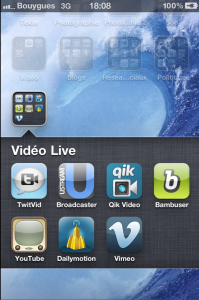 Our cellphones are not only phones anymore, they’re like a small computer that can be used for work. That’s why most journalists are now equipped with one. This way, they are always connected to the Internet and they can at any moment, search for latest news.
Our cellphones are not only phones anymore, they’re like a small computer that can be used for work. That’s why most journalists are now equipped with one. This way, they are always connected to the Internet and they can at any moment, search for latest news.
But above, smartphones can be used as tools. They are recorders and cameras, that can replace proper material for some occasions. Journalists should be multitasks and this devices make it easier. No need to be an expert in video or photography, applications on smartphones are within the reach of everyone.
In addition to the camera included on the phone – that are more performant every day – some applications exist that can be really useful for journalists. This is particularly the case for video editing apps, used by journalists to work on their reports, directly from their touchscreans. For the Iphone, different applications are available, like Splice and iMovie.
And once the video is edited, we can share it with Qik for exemple. A free application from the same editor as Skype, that can also be used to cover live events with its streaming function.
To learn more about those applications and others, and find links to download them, you can go here and here for even more details
There are plenty of mobile applications that are useful for journalists. The Knight Center of Journalism in the America’s blog of the University of Texas at Austin gives you a selection of five apps that every journalist should have.
We know that journalism is constantly changing and faced with new revolutions. And this mobile technology is one for the media.
It’s changing the way to work and the organisation of the redactions. With mobile devices, the journalism landscape is not the same anymore and for field journalists, smartphones have a prominent place in their work
Do we publish news on a phone application the same way as on a newspaper ?
Definitely not. People don’t read news on smartphones like on newspapers or even news sites. That is why medias have to create mobiles versions of their content that can be read with cellphones.
And how to do that ? Sentences and paragraphs should be shorter. Users can consult their news applications at any time but they don’t dedicate as much time as to newspapers. Moreover, it can be difficult to focus on a long text if it’s on a small screen. So journalists have to be able to reveal facts in a short way.
Headlines and subheads are important as well, they need to be really good worked to attract the attention of readers. This is true for newspapers too, but it became even more with the Internet, where information is overloaded.
We can also give a brief summary of the story, that users can read quickly on their phones. The idea here, is to bait people and to push them to read more about an information on an other support, that allow journalists to write a more detailed article, like newspapers or even websites.
An other important issue are videos and photos, they should illustrate the article and published along with the text, because it facilitates the reading. Likewise, they should be put on top of the topic to be easily accessible by mobile viewers.
Smartphones are giving a new life to citizen journalism
The distinct border between who consumes news and who produces it, is gradually becoming thinner. I’m not saying that journalism doesn’t exist anymore because anyone could do it, but that anyone can transmit information and facts. News consumers are often news producers as well. Imagine that you are witness of an unannounced protest or something like that, you’ll probably take photos and put them on the Internet. Thus, you can be considered as a news producer or a citizen journalist.
Online citizen journalism took his first steps with the transition to web 2.0 and with mobile devices, it became easier then ever. Smartphones allow you to take photos, videos and directly post them through the net. It’s fast, easy and free. Moreover, it can usually be seen by a lot of people and even become viral.
Most of the time, people post this kind of news and their own reporting, from their cellphones directly to social networks, like Facebook and Twitter. These platforms are often used for these purposes because they’re so accessible with smartphones applications. No need for much writing, a few words and a photo are enough to transmit a news. Then, people post status updates, notes, photos and videos from events regularly and often before mainstream media.
Therefore, this kind of news can be really useful for journalists. That way a journalist can be everywhere. If he finds something interesting that has been posted by someone in Twitter, he can include it in his own publication. So it can be a new tool for journalists to find information.
Blackberry or iPhone, which one should a journalist own?
Posted by blancodessa in Technology on January 10, 2011
A lot of different Smartphones exist on the market, but only two truly stand out: the Blackberry and the iPhone. The aficionados of both brands keep claiming one or the other is best, so I decided to take a closer look at both phones and decide for myself.
The questions I want to answer today are: “which phone is better for what purpose? And as future journalists which one should we own?”
First of all, one quick information, the Blackberry was created with business use in mind, the iPhone for a personnel use. Even though today the genres are mixing and people use Blackberry for personnel use, and business men might use the iPhone for work. It is clear that when the phones were created, they were designed to fit certain expectations depending on the consumers they were targeted for.
A Blackberry configured with Microsoft Exchange retrieves automatically new emails, without the user having to do anything, the iPhone does not. With a Blackberry, as soon as a message is sent it is downloaded immediately and the owner of the phone gets a warning that he or she has a new message. The iPhone on the other hand retrieves new information at most every 15 minutes and only from one inbox at a time, so it needs a regular check to see if anything new was sent, making email operation less effective on an iPhone.
The Blackberry clearly dominates the mobile email category
Battery life
The iPhone battery has a shorter life because it is used for more tasks that require a lot of energy, like web browsing or gaming. Plus it does not help the battery life of the phone if the user has to constantly check and open his or her email account to make sure nothing new was sent. The battery problem makes the phone less reliable because the user needs to make sure he will be able to recharge his phone anywhere he goes.
On this department, the Blackberry wins
Applications
Application wise, no comparison can be made, the iPhone is much better and more furnished as countless applications and games exist for the user. Applications have been the highlight of the brand since its creation. There are thousands of them existing. People can even create their own. Obviously some are useless but many other facilitate every days life. In comparison the Blackberry apps seems very poor.
The iPhone wins this one
Technicalities
The operating system of the iPhone is the most technologically advanced and has a better graphical interface than the Blackberry. The iPhone screen is bigger so navigating on the web and watching videos is best on it, the typing is not easier as the virtual keyboard can sometimes be hard to handle, but it is just as hard as the small blackberry keys.
The iPhone is also very interactive, mostly because of its touch screen and motion sensibility. The user can navigate online very easily because everything flows naturally. All the operations the phone does are much more intuitive than with the Blackberry.
One advantage for the Blackberry is that it synchronizes new information automatically with the WIFI. When a user makes changes in his calendar or in his contact list for example, changes appear automatically. The iPhone does not synchronize information changes from one application to another.
Security wise, the Blackberry is considered as one of the most secured phones for storing and transmitting data, which is an important guarantee for professionals
Another important point for the Blackberry is that all the Office documents can be opened but more importantly edited with the phone. On the iPhone they can only be opened.
We can call it deuce for this part, both phones have their technical advantages.
Result
The Blackberry seems to be better for business and advanced professional use because it is a small desktop extension and you can basically do anything you would normally do on a laptop.
If you are a business man it seems that the iPhone is lacking some vital functions to be a valid choice. Even if the designers always try to add better application to make the phone more professional, Blackberry is still ahead.
On the other hand, the iPhone is a success in large audiences mostly used for personnel purposes because it is seen as more innovative, interactive and fun
The iPhone is recommended for a personnel use and the blackberry as an extension of the professional environment. Blackberry wins for business use and security, iPhone for personal use and innovations. But when it comes down to functioning in the business world and having a practical phone, Blackberry wins.
As for a journalist it is difficult to decide which phone to own. I guess it depends on what the person wants to do with his or her phone and what he or she does on a daily basis. If the person spends most of the day inside and in meetings he might want to take a Blackberry, easier to manage for professional purposes. But then if the person is an aspiring journalist spending its entire day running from one side to another and navigating on the web to search for the latest news, then an iPhone is fit for him.

